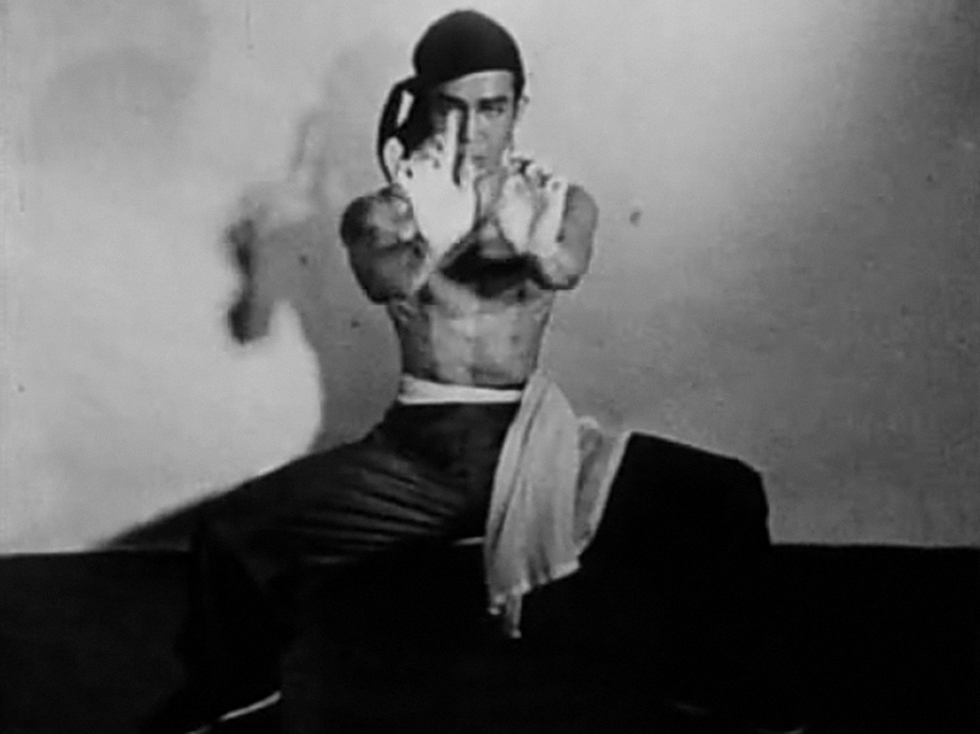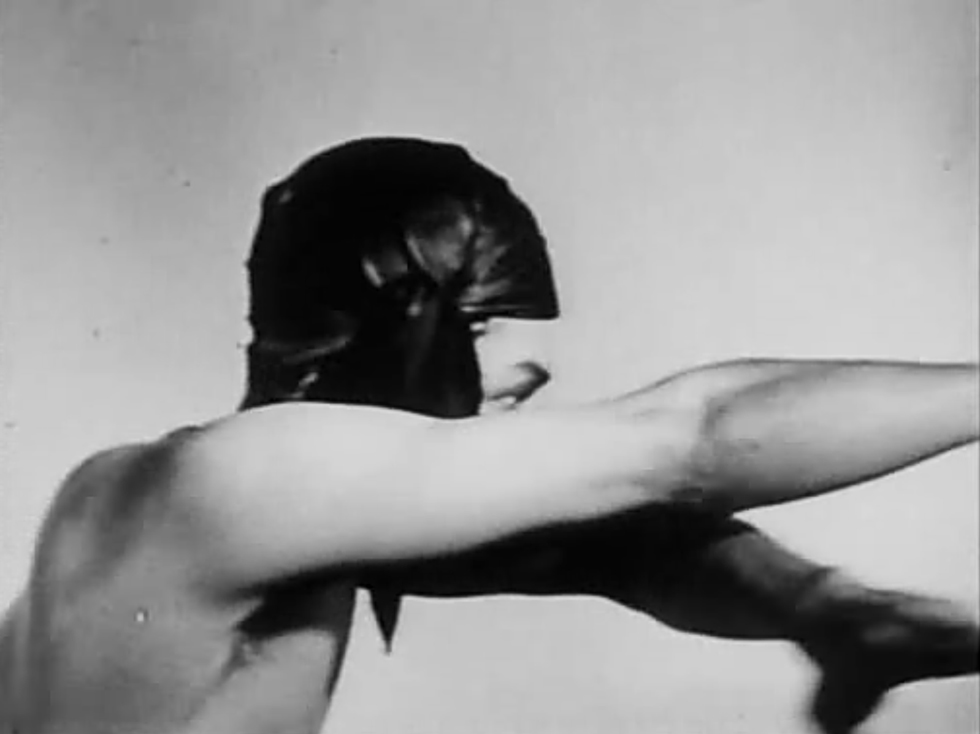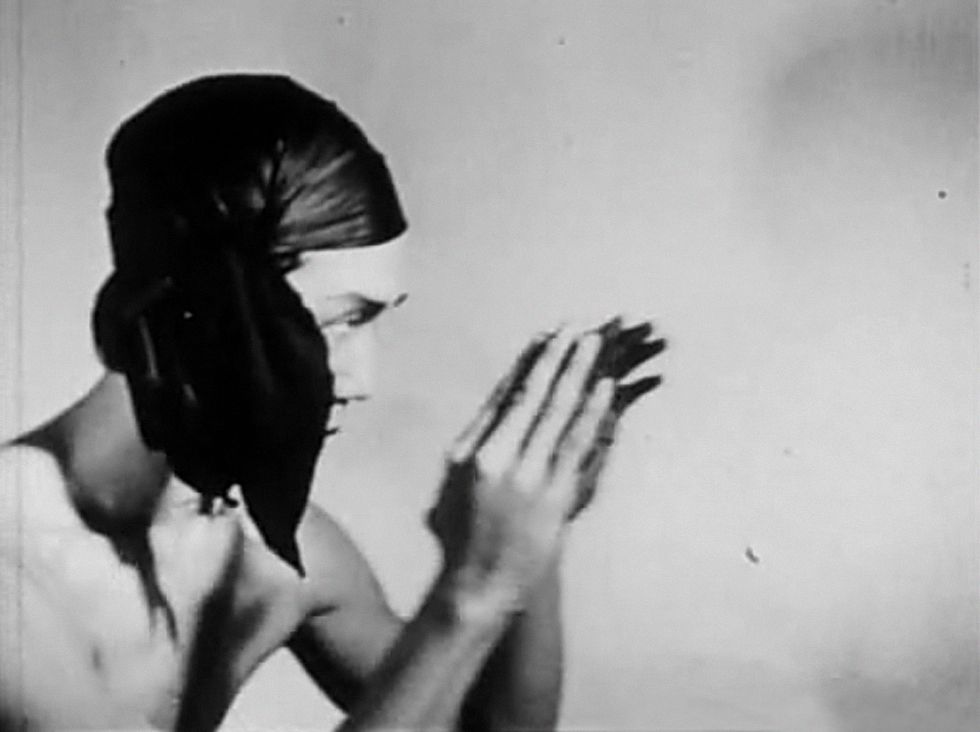Meditation On Violence (1948)
8 MAR
Director Maya Deren
Producer Maya Deren
Contributors Cherel Ito, Chao Li Chi
Length 15 minutes
B&W/Color B&W
UO Library Catalog description: Based on traditional training movements of the Wu-tang and Shaolin schools of Chinese boxing. Solo performance with theatrical lighting but without scenery ; solo performance outdoors in costume.
Call # Ma73
Genre Short Films, Dance
Rare Yes
Online Yes
Copyright status Public Domain
Physical condition Good
Oregon-related No
Notes: Meditation On Violence is a short film directed by avant-garde filmmaker Maya Deren. It was originally produced for a theatrical release in 1948. “Theatrical” is a term that should be used loosely, especially with Deren’s films, as the locales that she screened them in were usually art galleries or her own living room, which she converted into a makeshift theater for private viewings.
The film features Chao Li Chi, a Shanxi-born actor and dancer who worked extensively in American television and film. Meditation On Violence was one of his firs appearances on film. In it, he attempts to display the ideals of the Wu-Tang philosophy, which centers around the idea of constant motion according to “-which the perfect form is that of no form in an excellent performance attempts to display the ideals of the Wu Tang philosophy which is a philosophy of constant motion, which is achieved when you’re in a state of constant motion” (
http://www.imdb.com/title/tt0040578/). Chao Li Chi had an extensive history with Deren, and was a regular member of the dance troupe she was involved in during the 1940’s. I find it particularly interesting that Li Chi had such a successful career in Television and Film after working with Deren on such artsy, underground projects. He has subsequently appeared in Big Trouble In Little China, M*A*S*H, The Joy Luck Club, The Nutty Professor, The Prestige, Wedding Crashers and Pushing Daisies.
While at first glance this film may seem just like a documentation of a dance sequence, the editing style elevates it above the status of performance piece. The avant-garde style of Maya Deren is certainly not as pronounced in Meditation On Violence as a film like Meshes Of The Afternoon, but their are a fair number of sequences shot in slow motion, and “-the camera itself becomes the boxer’s sparring partner, dodging and attempting to return the athlete’s blows. The adjustments, pans, and zooms of the camera simulate a human response” (worldcat.com). It should also be noted that the film loops, returning to the first sequence. This technique breaks the passage of time, which was very typical of Deren’s films.
Another interesting thing is to note the soundtrack. Deren recorded Haitian drums for the piece, which reflected her fascination with Voodoo during the time period it was made.







 Reply With Quote
Reply With Quote